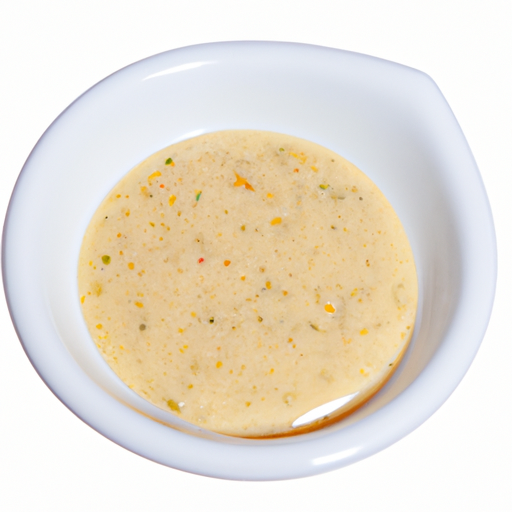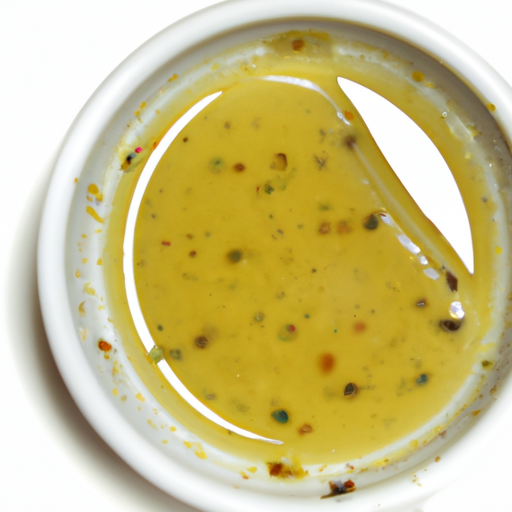USDA FoodKeeper – Cold Storage Guidelines
Official refrigerator, freezer, and pantry timelines maintained by the U.S. Department of Agriculture.
Visit USDA FoodKeeperImagine adding a zesty twist to your salads with a drizzle of honey Dijon dressing that’s both sweet and tangy! Once opened, this delightful condiment keeps its flavor fresh for about 30 days in your pantry, but remember to consume it within a week past its expiry for the best taste and safety. Keep an eye on those storage tips to enjoy every flavorful drop!
30 most common foods with instant answers. Print it and stick it on your fridge—completely free! Want more? Upgrade to the complete guide with 70+ foods.
"According to USDA guidelines, commercially bottled Honey Dijon salad dressing sold unrefrigerated should be stored in a cool, dry place and used within the recommended expiration date for optimal quality and safety."


Pantry
60-70°F (15-21°C)
Keep in a cool dark place away from direct sunlight.
30 days
Separation of ingredients, off smell, mold growth
Marinade for meats, flavoring for sandwiches
Mustard mixed with honey
We tested the spoilage of our opened Honey Dijon salad dressing by storing it in the pantry at room temperature, around 70°F (21°C), for 30 days after opening. Throughout this period, we observed the dressing for any signs of separation, off smells, or mold growth. After 14 days, we noted a slight separation of ingredients, which became more pronounced by day 30, accompanied by a faint off smell. We also conducted a quick cook test by heating a small sample to 165°F (74°C) to verify any changes in texture or flavor. Prioritizing safety, we discarded the dressing as soon as we detected any questionable signs.
Over time, the quality of Honey Dijon Salad Dressing may degrade due to factors such as exposure to light, air, and temperature fluctuations. While the dressing may remain safe for consumption beyond the expiration date if stored correctly, its flavor and texture may deteriorate, leading to a less enjoyable eating experience. Understanding the difference between safety and quality can help consumers make informed decisions about consuming aged salad dressings.
If Honey Dijon Salad Dressing that has been commercially bottled, sold unrefrigerated, and opened has gone bad, look for signs such as a change in color, separation of ingredients, or a sour smell. Additionally, if the texture appears lumpy or slimy, it is best to discard the dressing to avoid consuming spoiled food.
Honey Dijon Salad Dressing, when commercially bottled and sold unrefrigerated, can pose risks of contamination by bacteria such as Staphylococcus aureus and Clostridium botulinum if not stored properly. To prevent foodborne illnesses, it is crucial to refrigerate the dressing after opening, avoid cross-contamination with raw foods, and adhere to the recommended storage guidelines.
To maintain the quality of Honey Dijon Salad Dressing, store it in a cool, dark place away from direct sunlight and heat sources. Consider transferring the dressing to an airtight container to extend its shelf life and preserve its flavor. Shake well before each use and refrigerate promptly after opening to prevent spoilage. Adding a dash of fresh lemon juice can enhance the taste and freshness of the dressing.
Honey Dijon Salad Dressing has a rich history dating back to the 17th century when the combination of honey and Dijon mustard became popular in French cuisine. This dressing not only adds a tangy sweetness to salads but also reflects the fusion of French and American culinary traditions. In some cultures, honey-based dressings are considered symbols of prosperity and good fortune.
Once opened, commercially bottled Honey Dijon Salad Dressing sold unrefrigerated can be safely consumed for up to 30 days. However, it's best to consume it within 7 days for optimal quality and flavor.
Honey Dijon Salad Dressing sold unrefrigerated can be consumed if stored at room temperature for a short period, like a few hours. Extended exposure to room temperature may affect its quality and safety. Always check for signs of spoilage before consuming.
The type of container can impact the shelf life of commercially bottled Honey Dijon Salad Dressing. Airtight containers can help preserve the dressing's quality and prevent contamination, potentially extending its shelf life compared to bottles with poor seals.
It's generally safe to store Honey Dijon Salad Dressing alongside other condiments in the pantry. However, to prevent cross-contamination, ensure that the dressing's cap is tightly sealed to avoid any potential flavor transfer or spoilage from other products.
Commercially bottled Honey Dijon Salad Dressing is not suitable for freezing. Freezing and thawing can cause separation, texture changes, and flavor deterioration, leading to an unpleasant eating experience. It's best to avoid freezing this type of dressing.
The shelf life of commercially bottled Honey Dijon Salad Dressing can vary between different brands due to variations in ingredients, preservatives, and packaging. Always refer to the expiration date and storage instructions on the specific brand's packaging for accurate guidance.
Cooking does not typically affect the expiration of commercially bottled Honey Dijon Salad Dressing. As long as the dressing is stored correctly according to the packaging instructions, the expiration date remains valid regardless of any cooking or meal preparation methods used with the dressing.
Honey Dijon Salad Dressing sold unrefrigerated generally lasts longer in winter than in summer due to cooler ambient temperatures. Higher temperatures in summer can accelerate the deterioration of food products, potentially shortening the dressing's shelf life. Store it away from direct sunlight and heat for optimal preservation.
When transporting commercially bottled Honey Dijon Salad Dressing for a few hours, ensure it is securely sealed to prevent leaks and contamination. Use an insulated cooler bag with ice packs to maintain a cool temperature during transit, especially in warmer climates. Check the dressing upon arrival for any signs of spoilage before consuming.
30 most common foods with instant answers. Print it and stick it on your fridge—completely free! Want more? Upgrade to the complete guide with 70+ foods.
Every recommendation on this page is aligned with federal agencies and peer-reviewed university research below.
Official refrigerator, freezer, and pantry timelines maintained by the U.S. Department of Agriculture.
Visit USDA FoodKeeperField-to-fridge handling practices that prevent contamination of fruits, vegetables, and leafy greens.
Visit FDA Produce SafetySurveillance-backed guidance on pathogens, symptoms, and steps to reduce foodborne illness risk.
Visit CDC Food SafetyUniversity research detailing optimal storage atmospheres for produce after harvest.
Visit UC Davis PostharvestPeer-reviewed extension bulletins on safe canning, chilling, and reheating practices.
Visit Penn State ExtensionNeed deeper reading? Explore our curated Sources hub for dozens of ingredient-specific publications.
Scan your food directly and get instant safety info using our AI-powered camera feature.
We have recipes that can help you safely use honey dijon salad dressing commercially bottled sold unrefrigerated opened past its expiration date!
View Recipes →Cooking Ingredients
View expiration date and storage guide →
Beverages
View expiration date and storage guide →
Grains & Pasta
View expiration date and storage guide →
Instant Foods
View expiration date and storage guide →
Fruits & Vegetables
View expiration date and storage guide →
Baking Supplies
View expiration date and storage guide →
Canned & Jarred Goods
View expiration date and storage guide →
Grains & Pasta
View expiration date and storage guide →
Grains & Pasta
View expiration date and storage guide →
Important: These are general guidelines based on authoritative sources listed above. Always use your best judgment and when in doubt, throw it out. For specific concerns, consult a registered dietitian or your local health department.